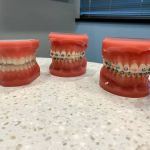How Often Should You Change Your Toothbrush? Essential Tips for Maintaining Oral Health
- Why Changing Your Toothbrush is Important
- How Often Should You Change Your Toothbrush?
- Signs You Need to Replace Your Toothbrush
- What Are the Benefits of Changing Your Toothbrush?
- How to Care for Your Toothbrush to Extend Its Life
- Where to Buy Quality Toothbrushes for Optimal Oral Care
Why Changing Your Toothbrush is Important
When it comes to maintaining good oral hygiene, using the right toothbrush and replacing it regularly is crucial. Over time, the bristles on your toothbrush can become frayed, less effective, and a breeding ground for bacteria, which may lead to potential oral health problems. Regularly changing your toothbrush ensures you’re getting the most out of your daily brushing routine and can help prevent the buildup of germs and bacteria that might otherwise contribute to oral issues.
But how often should you change your toothbrush? It’s not a question with a one-size-fits-all answer, but there are general guidelines that can help you maintain your oral health effectively. Additionally, knowing when to change your toothbrush is a key part of optimizing your dental hygiene practices. Read on to find out everything you need to know about toothbrush replacement, its benefits, and when it's time to say goodbye to your old toothbrush.
How Often Should You Change Your Toothbrush?
The American Dental Association (ADA) recommends changing your toothbrush every three to four months, or sooner if the bristles are worn or frayed. This timeline ensures that your toothbrush remains effective in removing plaque and debris from your teeth. Over time, the bristles on your toothbrush begin to lose their stiffness, making them less effective at cleaning your teeth and gums.
Some people might wonder if they need to change their toothbrush more frequently, especially if they use it multiple times per day. While it’s important to stick to the general guideline of replacing your toothbrush every three to four months, there are circumstances where you should replace it sooner. For example, if you've recently been sick, it’s a good idea to change your toothbrush to avoid reintroducing bacteria into your mouth.
Signs You Need to Replace Your Toothbrush
While the ADA guidelines suggest a three-to-four-month replacement schedule, there are certain signs you can watch for that indicate it’s time to replace your toothbrush. Here are some signs that suggest you should get a new one sooner:
- Frayed Bristles: If the bristles on your toothbrush appear bent, frayed, or worn down, it’s time to replace it. Frayed bristles are less effective at cleaning your teeth and can even cause irritation to your gums.
- Change in Appearance: If the toothbrush head appears visibly worn or the bristles are splayed, it's a sign that the brush has lost its ability to clean effectively.
- After Illness: If you've had a cold or the flu, it's recommended to replace your toothbrush after you've recovered to avoid reintroducing germs into your mouth.
What Are the Benefits of Changing Your Toothbrush?
Changing your toothbrush regularly offers several important benefits for your oral health:
- Better Cleaning: A fresh toothbrush with stiff bristles removes plaque and food particles more effectively, helping to maintain clean teeth and healthy gums.
- Prevents Bacteria Growth: Old toothbrushes can harbor bacteria and germs, which can lead to reinfection or oral health problems like bad breath or gum disease. A new toothbrush reduces this risk.
- Maintains Gum Health: A toothbrush with frayed bristles can be too harsh on your gums, leading to irritation or even gum recession. Regularly replacing your toothbrush ensures that the bristles remain gentle yet effective.
How to Care for Your Toothbrush to Extend Its Life
While regular replacement is essential, proper care for your toothbrush can help extend its lifespan and maintain its effectiveness. Here are some tips on how to care for your toothbrush:
- Rinse Thoroughly After Use: After each use, rinse your toothbrush thoroughly to remove toothpaste and debris. This helps prevent buildup that could breed bacteria.
- Store Upright: Store your toothbrush in an upright position to allow it to dry properly. Avoid storing it in a closed container where moisture can accumulate.
- Keep Away from Germs: Don’t allow your toothbrush to touch other toothbrushes or surfaces that might introduce germs. This will help keep it clean and free of harmful bacteria.
Where to Buy Quality Toothbrushes for Optimal Oral Care
If you're looking for high-quality toothbrushes that are both effective and gentle on your teeth and gums, visit [Dentistry Toothtruth](https://familydentistryonline.net). They offer a wide selection of toothbrushes, including manual, electric, and eco-friendly options, designed to meet your oral health needs.
Ready to improve your oral hygiene routine? Visit [Dentistry Toothtruth](https://familydentistryonline.net) today to find the perfect toothbrush for your daily care.







 WestgateRx Dentist3.0 (2 review)
WestgateRx Dentist3.0 (2 review) Integrated Dental4.0 (189 review)
Integrated Dental4.0 (189 review) Gig Harbor Family Dentistry3.0 (38 review)
Gig Harbor Family Dentistry3.0 (38 review) Gladwell Orthodontics4.0 (253 review)
Gladwell Orthodontics4.0 (253 review) Dr. Karen T. Martin-Phillips, DMD4.0 (26 review)
Dr. Karen T. Martin-Phillips, DMD4.0 (26 review) Community Dental Care4.0 (1442 review)
Community Dental Care4.0 (1442 review) The Importance of Oral Health Education During Pregnancy for a Healthy Pregnancy
The Importance of Oral Health Education During Pregnancy for a Healthy Pregnancy Best Tips for Brushing Your Teeth Properly for Healthy Gums: Essential Techniques for Oral Health
Best Tips for Brushing Your Teeth Properly for Healthy Gums: Essential Techniques for Oral Health Why Skipping Dental Checkups Can Lead to Bigger Oral Health Problems
Why Skipping Dental Checkups Can Lead to Bigger Oral Health Problems Advantages of Porcelain Dental Restorations
Advantages of Porcelain Dental Restorations How Can Diabetes Cause Tooth and Gum Problems? Preventing and Managing Oral Health Issues
How Can Diabetes Cause Tooth and Gum Problems? Preventing and Managing Oral Health Issues Healthy Habits for Promoting Good Oral Health and Hygiene: Tips for a Healthy Smile
Healthy Habits for Promoting Good Oral Health and Hygiene: Tips for a Healthy Smile